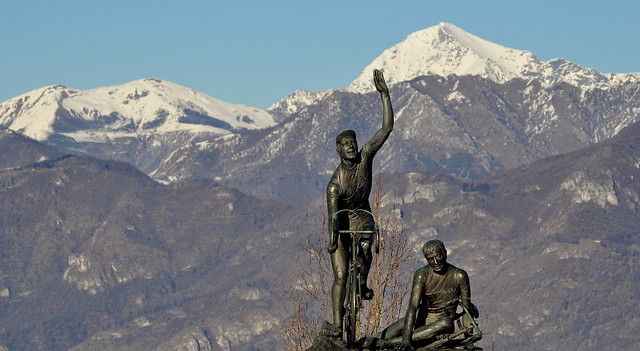One of the most valued mountain domestiques today, Italian
Mauro Santambrogio of Team BMC played a significant part in Cadel Evans' Tour de France win in 2011. Tirelessly he paced Evans up the Alpine climbs, often the only climber left in the team to help their GC leader.
Just like many domestiques, Santambrogio rarely wins races on his own; but one victory in particular stood out, his win in
Tre Valli Varesine in 2010. Finishing in the Alpine town of Campione d'Italia, Tre Valli Varesine is a great mid-summer race played out in the Italian alpine resort area.
Of course, what can't have missed what a great town name
Campione d'Italia is: what's in a name? It is an
exclave of Italy surrounded by Italian-speaking Switzerland that was ceded by Pope Julius II to reward the help of the Swiss back in the days. It stayed a part of Italy only because it was ruled by the Monks of Sant'Ambrogio in Milan, who then maintained their control of the town. Of course, that's the root of Mauro Santambrogio's name. We wonder if he celebrated this symmetry when he won that day in 2010.
 |
| Campione d'Italia: surrounded by Switzerland. |
Campione d'Italia often hosts cycling races: the Giro d'Italia has held several stages there including time trials. Conveniently, it also hosts several casinos and use the Swiss Franc instead of Euros or Italian Lires back in the day.
So there you have it: Mauro Santambrogio and Campione d'Italia. What's in a name?



